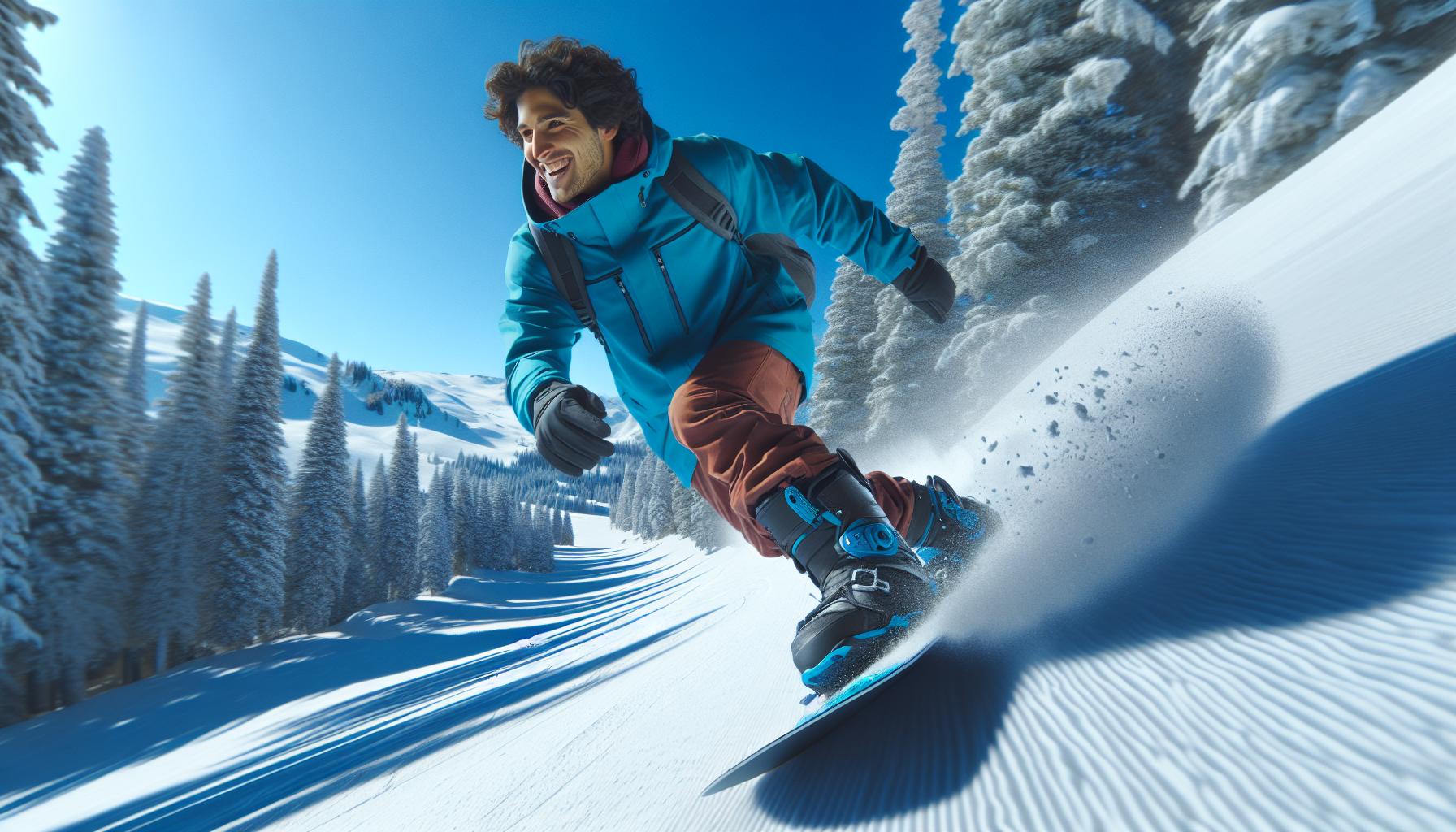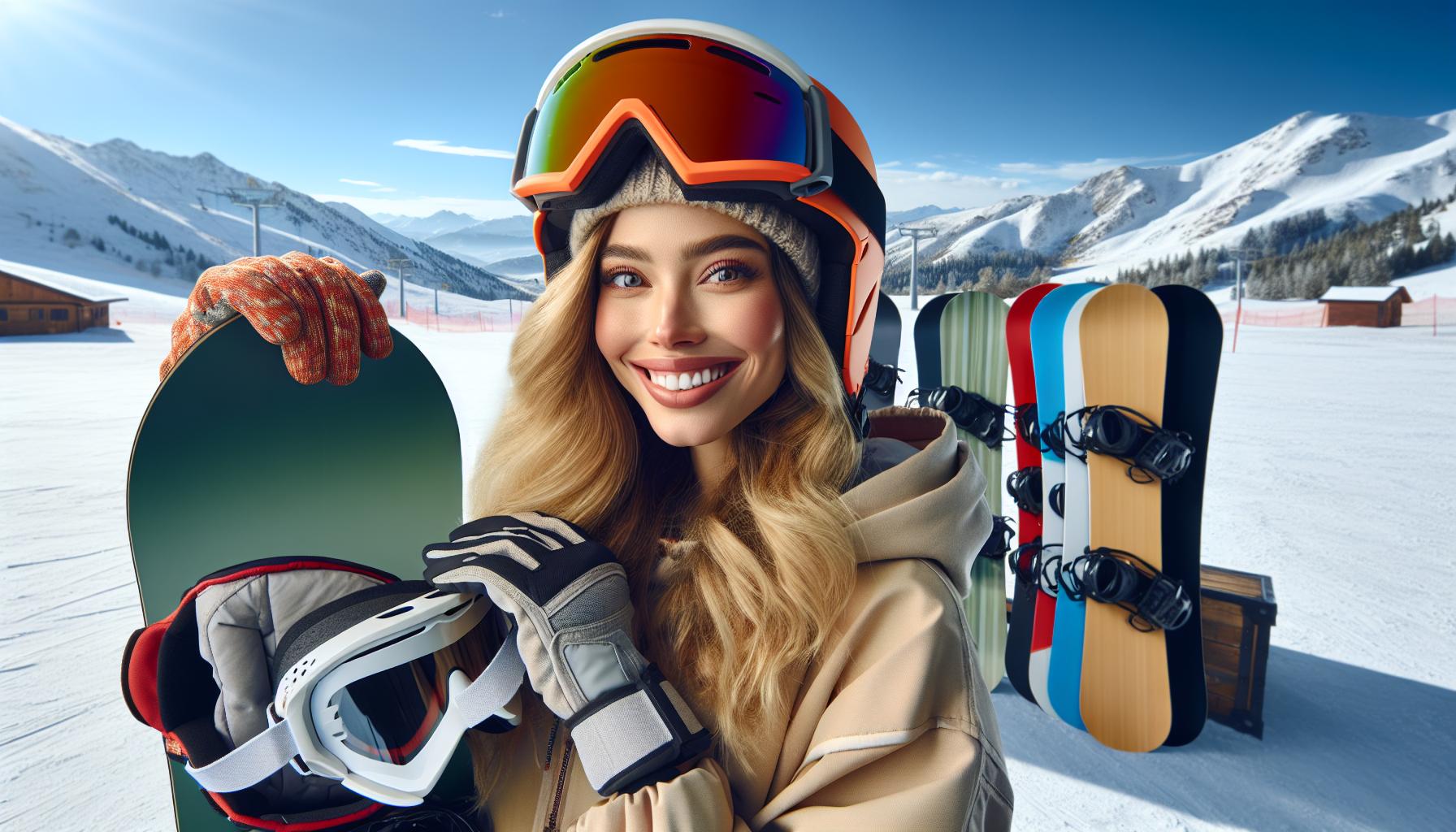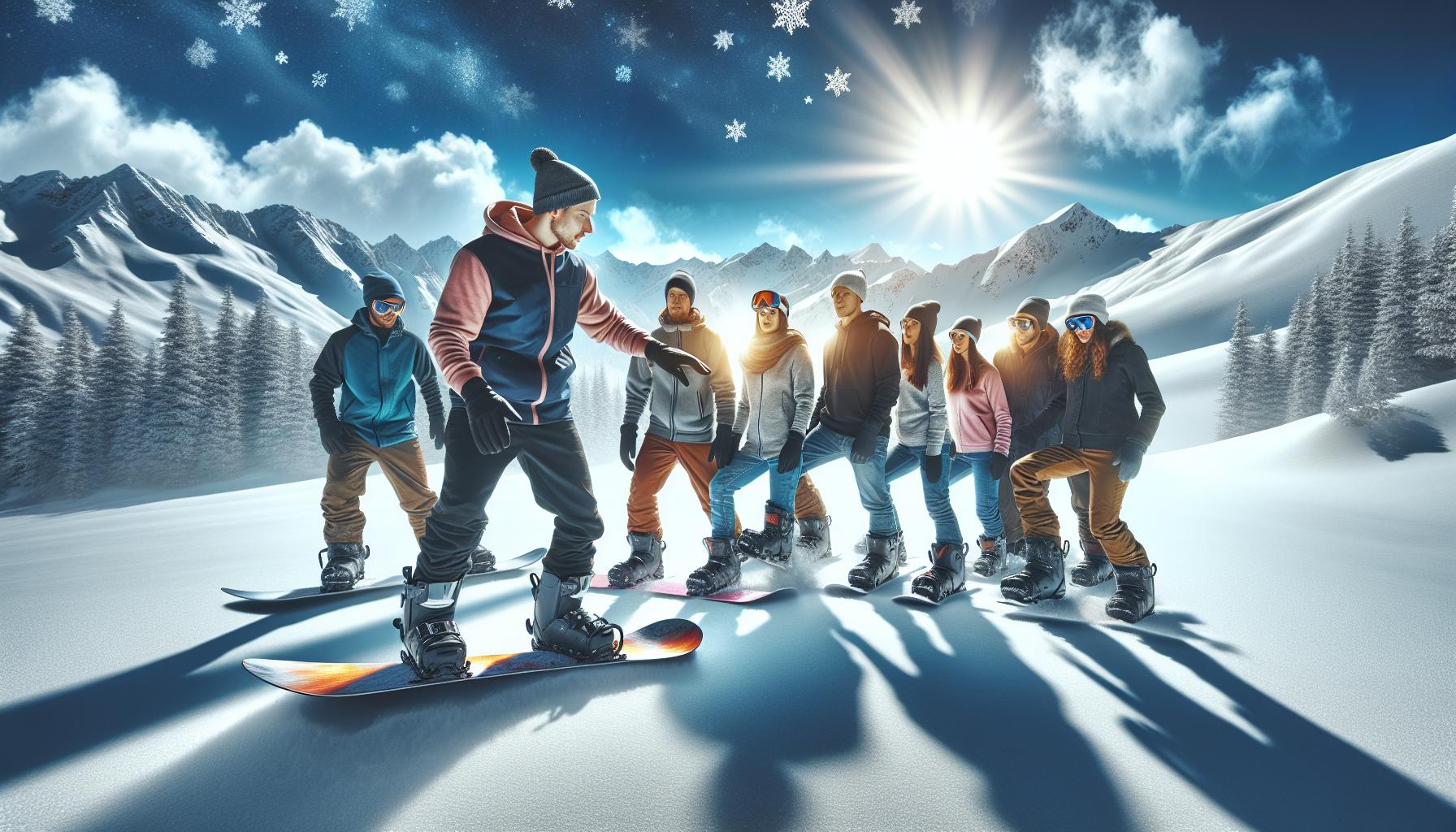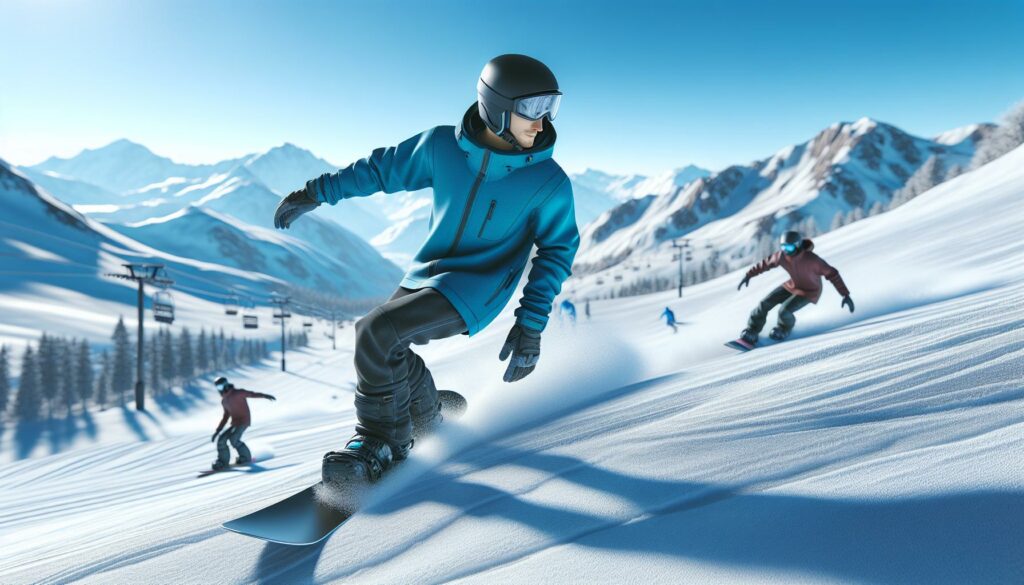Snowboarding has always seemed like a thrilling adventure, but as an adult, I wondered if I could really master it. The thought of gliding down snow-covered slopes filled me with excitement and a bit of anxiety. It’s easy to think that snowboarding is just for kids or young adults, but I’ve discovered that it’s never too late to learn something new and embrace the challenge. With the right mindset and a few essential tips, I found that picking up snowboarding as an adult can be incredibly rewarding. Whether you’re seeking a new hobby or looking to conquer your fears, the journey of learning to snowboard opens up a world of fun and camaraderie. Join me as I share my experiences and insights on how to hit the slopes and enjoy every moment of this exhilarating sport.
- Embrace the Challenge: It’s never too late to start snowboarding; as an adult, you can enjoy the thrill and satisfaction of mastering a new skill.
- Physical and Mental Benefits: Snowboarding improves fitness levels through cardiovascular exercise and enhances mental well-being by reducing stress and boosting self-esteem.
- Choose Appropriate Gear: Selecting the right snowboard type and protective equipment is crucial for a safe and enjoyable experience.
- Lessons Matter: Opt for group or private lessons based on your learning style; find a qualified instructor to facilitate effective skill development.
- Practice Safe Falling: Learn how to fall and get back up safely to prevent injuries and build confidence on the slopes.
- Stay Motivated: Set achievable goals and celebrate progress to enhance motivation and overcome fear while learning to snowboard.
Learning to Snowboard as an Adult
Learning to snowboard as an adult brings a unique set of joys and challenges. The thrill of mastering new skills creates a sense of accomplishment that’s deeply satisfying. When I strap on my snowboard and glide down the slope, the exhilaration of speed and the beauty of snow-covered landscapes heighten the experience.
Meeting new people on the mountain fosters camaraderie. I’ve found that fellow snowboarders often share tips and encouragement, creating a supportive community. Engaging with others makes every ride more enjoyable.
Improvement comes with practice. Each run allows me to refine my techniques, build confidence, and embrace the sport’s physical demands. The feeling of progression motivates me to push my limits.
Winter sports present an opportunity for exercise. Snowboarding enhances balance, strength, and endurance. Each session works various muscle groups while enjoying the breathtaking outdoor scenery.
Overall, learning to snowboard as an adult transforms anxiety into excitement. The journey becomes a remarkable adventure filled with joy, connection, and personal growth.
Benefits of Snowboarding for Adults

Snowboarding offers various benefits for adults, ranging from improved physical fitness to enhanced mental well-being. Engaging in this sport not only promotes a healthy lifestyle but also contributes positively to overall life satisfaction.
Physical Fitness
Improving physical fitness through snowboarding involves several key aspects. Snowboarding provides an excellent cardiovascular workout, raising heart rates during runs down the slopes. It engages multiple muscle groups, particularly in the legs, core, and back, increasing strength and endurance.
Enhancing balance and coordination is a significant benefit as well. The dynamic movements required to navigate turns and maintain stability strengthen core muscles and promote agility. Snowboarding often demands flexibility, leading to improved joint mobility over time. Regular practice results in heightened fitness levels, contributing to weight management and overall health.
Mental Health
Boosting mental health is another vital benefit of snowboarding. The thrill of carving down a mountain releases endorphins, often referred to as ‘feel-good hormones.’ These hormones help reduce stress and anxiety, fostering a sense of euphoria after each ride.
Enhancing social connections is equally essential. Snowboarding provides opportunities to meet like-minded individuals, creating a supportive community. Sharing experiences and tips with fellow snowboarders fosters camaraderie, reducing feelings of isolation. Furthermore, facing the challenges of learning a new skill instills confidence and a sense of accomplishment, significantly improving self-esteem and overall mental well-being.
Essential Gear for Adult Beginners

Getting the right gear is crucial for a positive snowboarding experience. I focused on two main categories: snowboard types and protective equipment.
Snowboard Types
Choosing the right snowboard made a significant difference in my learning. I encountered three main types of snowboards:
- All-Mountain Snowboards: Versatile, suitable for various terrains and conditions. They offer a balance of stability and maneuverability.
- Freestyle Snowboards: Lighter, designed for tricks and jumps in terrain parks. They are more flexible, allowing for easier spins and flips.
- Freeride Snowboards: Built for off-piste and powder snow, they provide better control in deep snow but can be less maneuverable on groomed trails.
Selecting the right type depends on where I plan to ride most often. Many rental shops offer demo options, allowing me to test different boards.
Protective Equipment
Wearing protective equipment is non-negotiable for a safe start. I made sure to invest in these essentials:
- Helmet: A properly fitting helmet protects my head from injury. Look for one that meets safety standards.
- Wrist Guards: These prevent common wrist injuries that can occur during falls. They provide additional support and can make a big difference.
- Knee Pads: While not as common, knee pads offer extra cushioning during beginner falls.
- Elbow Pads: These protect my elbows and add confidence in challenging situations.
- Goggles: Goggles enhance visibility in snowy and sunny conditions. They prevent glare and keep my eyes safe from the elements.
Prioritizing protective equipment enhances my confidence, allowing me to focus on improving my skills without worrying about potential injuries.
Choosing the Right Snowboarding Lessons

Selecting the right type of snowboarding lesson can significantly impact the learning experience. Based on my journey, I’ve seen how various formats cater to different needs and preferences.
Group Lessons vs. Private Lessons
Group lessons provide camaraderie and shared experiences, making them ideal for social learners like me. These lessons often feature multiple students, allowing for an energetic atmosphere and the opportunity to connect with others. Group lessons generally cost less, making them a budget-friendly option.
Private lessons offer individualized attention, accelerating the learning process. Instructors tailor these sessions to specific skill levels, addressing unique challenges. For me, private lessons provided immediate feedback that helped refine my technique and boost my confidence on the slopes. Weighing the costs and benefits of each format can guide your decision.
Finding the Right Instructor
Finding an instructor who aligns with personal goals enhances the learning experience. I recommend seeking certified instructors with experience teaching adults. Certification assures a standard of professionalism, which adds to the safety and effectiveness of the lessons.
Reading reviews and getting recommendations can help identify an instructor who resonates with your learning style. I found it beneficial to inquire about their teaching methods—some instructors emphasize a relaxed approach, while others focus on rapid progression. When the instructor’s style fits your personal preferences, it fosters a more productive and enjoyable learning environment.
Tips for First-Time Adult Snowboarders
Snowboarding as an adult presents unique challenges and rewards. By following these tips, I’ve found that success and enjoyment can come quickly for new adult snowboarders.
Balancing and Falling Safely
Balancing on a snowboard requires practice but can be achieved through simple techniques. Start with a wide stance to enhance stability, keeping knees slightly bent. Keep your weight centered over the board, shifting it from front to back smoothly.
Falling is part of learning. When I fell, I aimed to fall to the side rather than backward to reduce the risk of injury. Always tuck your arms in to avoid straining the shoulders. To get up, position the board sideways while keeping your knees bent and push off with your hands. This method helps regain your footing without the struggle.
Staying Motivated and Overcoming Fear
Staying motivated is essential during the learning process. Set small, achievable goals, like mastering a turn or riding a small slope, to track progress. Celebrate each milestone to maintain enthusiasm.
Overcoming fear comes with familiarity. I often visualized success before hitting the slopes and focused on enjoying the experience rather than stressing about mistakes. Surrounding myself with supportive friends or joining a community of snowboarders provided encouragement and camaraderie, making it easier to tackle challenges and embrace the learning journey.
Learning to snowboard as an adult has been one of the most rewarding experiences of my life. It’s a journey filled with excitement and personal growth that proves age is just a number. The thrill of mastering new skills and the joy of connecting with fellow snowboarders have enriched my time on the slopes.
With the right mindset and support from the community I’ve found, I’ve not only improved my riding but also enhanced my physical and mental well-being. So if you’re considering taking the plunge into snowboarding, I encourage you to embrace the challenge. You won’t just discover a fantastic sport; you’ll also create lasting memories and friendships along the way.



